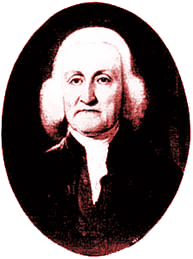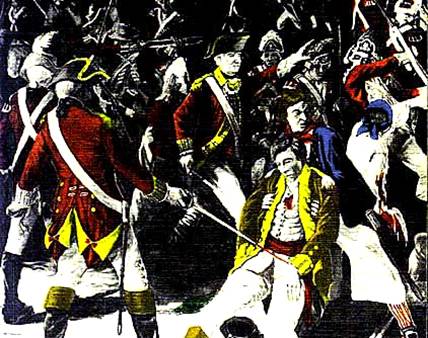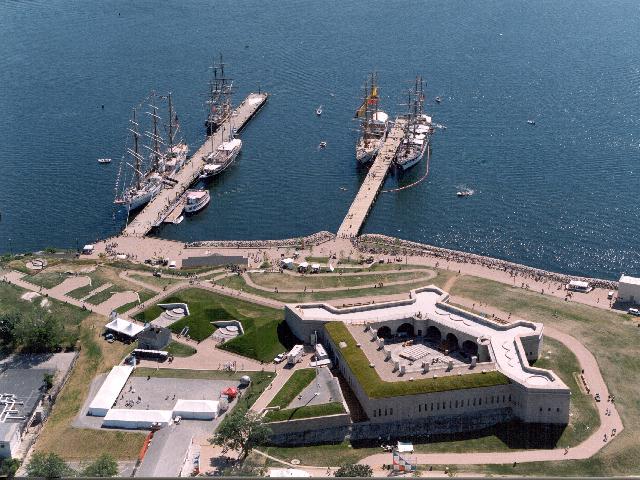FORT TRUMBULL HISTORY



Two centuries at the front lines of
defending our freedoms!
 Revolutionary War:
Revolutionary War:
The
first fortifications on the site of the current fort date to the Revolution.
None of these survive. Fort Trumbull takes its name from Jonathan Trumbull, Connecticut's
wartime governor. During the Revolution Connecticut was known as the Provision State, and most of the supplies for Washington's army
passed through the state, with New London being the
principal port in this activity. New London was a hotbed of Revolutionary
fervor, which brought about the British attack on the port in the closing weeks
of the war.

Burning of New London in 1781:
On
the morning of September 6, 1781, a large British force commanded by Benedict
Arnold attacked New London, commencing at Fort Trumbull. The defenders of Fort
Trumbull briefly engaged the British before spiking their guns and rowing
across the Thames River to join the larger force of defenders at Fort Griswold. By the end of the day, most
of New London lay in ruins after the British set it aflame, and the majority of
the defenders of Fort Griswold were killed after the British stormed the fort. As a percentage of the nation's population,
the number of Americans killed that day was two-and-a-half times as great as on
September 11, 2001. The Groton Monument
stands as a memorial to this terrible tragedy. This is the only time Fort Trumbull has seen
military action, and New London  paid a
greater price in blood and wealth than any other community during the
Revolution. Six weeks after the British attack, and determined not to allow a
repeat of the Groton slaughter, Washington prevailed
at Yorktown and the war ended.
paid a
greater price in blood and wealth than any other community during the
Revolution. Six weeks after the British attack, and determined not to allow a
repeat of the Groton slaughter, Washington prevailed
at Yorktown and the war ended.
Read a 19th
Century account of that day's events
The pension application
of Jonathan Waterhouse, who served at Fort Trumbull

Current Fort:

(Picture Courtesy of the McGuire Group)
The tall ships of OpSail 2000 docked
at Fort Trumbull
The
current fort (the third to sit on this site) was built between 1839 and 1852.
It is in the Egyptian Revival style, and is part of the Third System of American
coastal defenses. Additional information on seacoast defense in the United States can be found here: .
The oldest structure on the grounds of the park is the blockhouse, built
in 1786. No traces of any previous
fortifications survive.

Civil war:
During the Civil War Fort Trumbull served as a Union fort used
primarily for inducting and training recruits.
Read
Mark Twain's short thriller set at Fort Trumbull during the
Civil War: A Curious Experience

U.S.
Coast Guard Academy:
Fort Trumbull
was the home of the Coast Guard's first academy from 1915 to 1932 when it was
moved further up river to its present location at the northern end of New
London. The Coast Guard's training ship, the Barque Eagle, docks at Fort Trumbull two or
three times during the year and is open to visitors when at the Fort. This site has more ship specifications for the Eagle.


U.S. Merchant Marine
Officer Training School
The
Maritime Officers Training School at Fort Trumbull graduated 15,473 officers in
76 classes between 1939 and 1946, when the operation was transferred to the
U.S. Merchant Marine Academy on Long Island. More information can be found here.

COLD WAR:
Fort Trumbull’s final tour of duty on
behalf of the nation was during the second half of the Twentieth Century when
the U.S. Navy created the Naval Underwater Sound Laboratory there. This was the principal sonar research facility
operated by the Navy, and worked in close cooperation with the Naval Submarine
Base and Electric Boat shipyard, both located across the Thames River in Groton. Sound Lab personnel gained international
recognition for their pioneering work in acoustics and applied their expertise
to develop and introduce into the U.S. Fleet advanced high-performance sonar
suites for both submarines and surface vessels. The Laboratory was also involved in
the development of periscopes and non-acoustic sensors used on submarines,
providing at one location an expertise in all aspects of detection. The broad mix of talent covered a spectrum
ranging from theoretical acoustic research, computerized system and warfare
analysis and simulation, through fleet introduction and check-out of new sonar
suites. This provided a core of resident
expertise that was at the forefront of the evolution of modern antisubmarine
warfare sensor systems.
The efforts of the New
London Laboratory began in the early days of World War II in response to the
presence of German U-boats in the North Atlantic which generated a
requirement for an effective means of combating that threat. In response to this requirement, a small
building was erected at Fort Trumbull for the Columbia
University Division of War Research under the sponsorship of the National
Defense Research Committee (NDRC).
Concurrently, a similar group known as the Harvard Underwater Sound
Laboratory was established in Cambridge, Mass. Development work at New London in the period from
April 1941 to August 1943 included aircraft listening equipment, ordnance,
surface craft listening and echo-ranging equipment. The highly successful radio sonobuoy and
submarine-installed listening sonars were developed at Fort Trumbull. Concurrently, the work at Harvard was
directed toward active antisubmarine warfare scanning equipment. The term “SONAR” (S Ound Navigation And Ranging) originated there. Their efforts resulted in numerous devices
and equipment, radically new in design and function, that
ultimately reduced the threat to shipping in the Atlantic and changed the nature
of warfare in the Pacific. After the
war, in 1944, the university laboratories’ work was continued under Navy
cognizance, and in 1945, Harvard and New London’s Columbia laboratory were merged
to form the Navy Underwater Sound Laboratory (NUSL)
at Fort Trumbull.
During the 1950s and
1960s, New London’s
Research and Development focused on new scientific problems posed by the development
of nuclear submarines and guided missiles.
NUSL had a definitive role in submarine sonar and radio communication
systems and antisubmarine sonar systems for surface craft. Efforts also included ocean surveillance
systems for continental defense against missile-launching submarines,
underwater acoustic research, and Polaris command communications. Expanded research activities at the site
necessitated alterations to many of the old buildings and the construction of
additional new ones. In 1970 the New
London facilities were combined with undersea
research and development activities in Newport,
Rhode Island
into a single center where the technological expertise for underwater systems
could provide an organization with extensive combat control and communication
expertise. The result of this
combination was the Naval Underwater Systems Center (NUSC). In 1992, the Naval
Underwater
Systems
Center
was absorbed by a newly created Naval Undersea Warfare Center (NUWC) with major
divisions in Newport,
Rhode Island
and Keyport Washington. At that time, the New London Laboratory was redesignated as the New London Detachment of NUWC. With the close of the Cold War, the Navy
consolidated the operations of the New
London facility with its Newport,
R.I.
Facility. In 1996 the Navy closed the
New London laboratory, and several years later the property was transferred to
the State of Connecticut which invested $25 million to bring Fort Trumbull back
to the condition it was in a century ago prior to its grand opening as the
state's newest park in June of 2000.









 Revolutionary War:
Revolutionary War:
![]()
 paid a
greater price in blood and wealth than any other community during the
Revolution. Six weeks after the British attack, and determined not to allow a
repeat of the
paid a
greater price in blood and wealth than any other community during the
Revolution. Six weeks after the British attack, and determined not to allow a
repeat of the ![]()

![]()
![]()

![]()
![]()